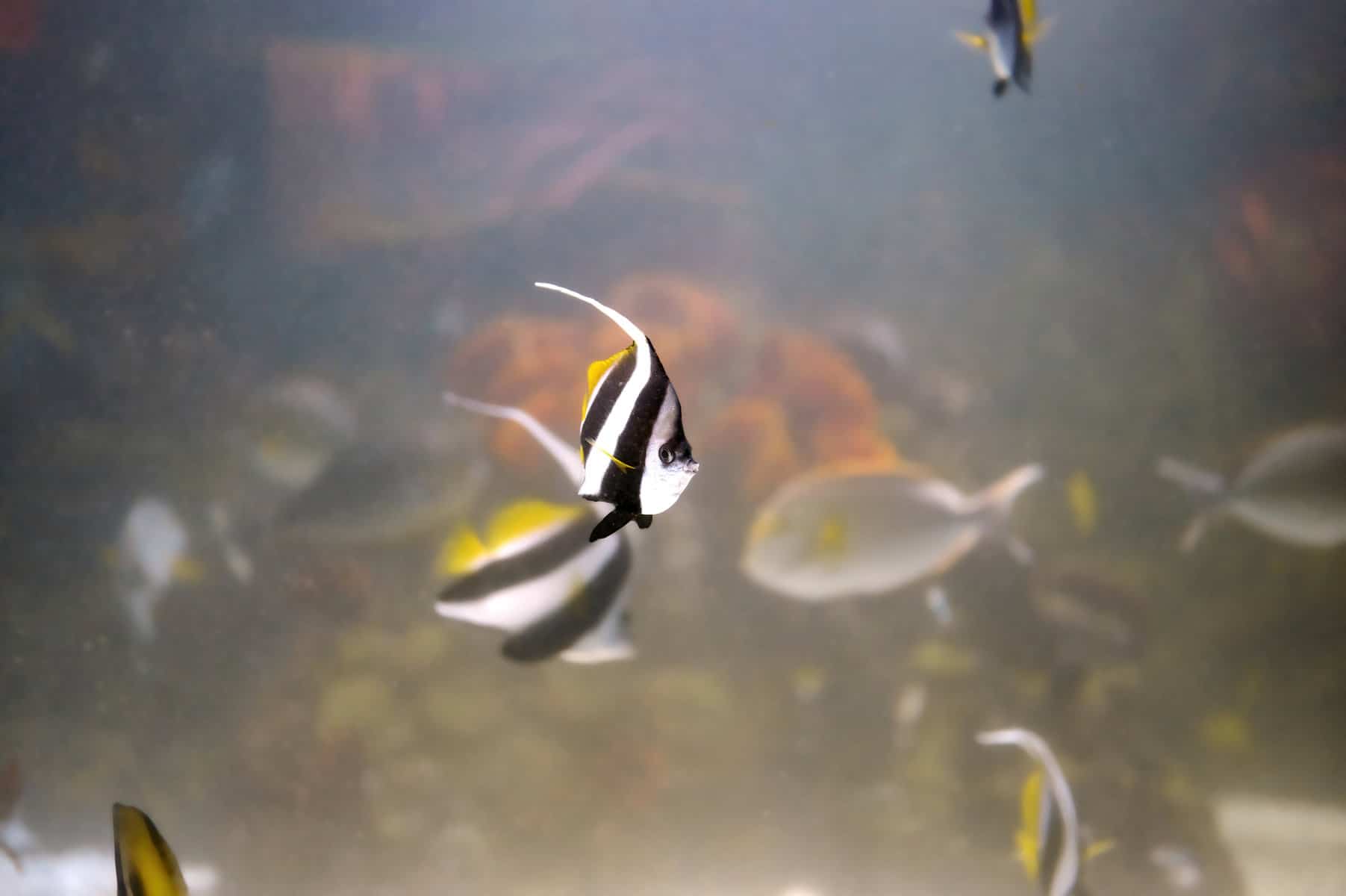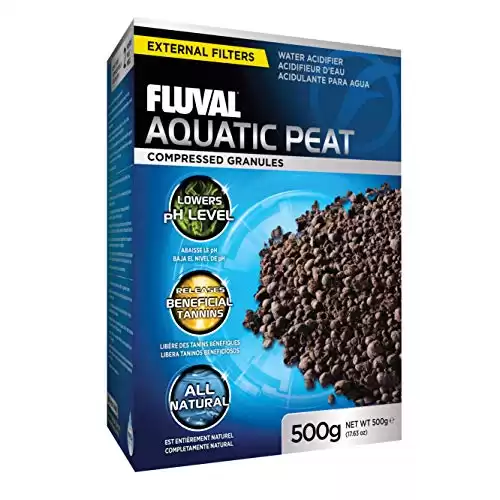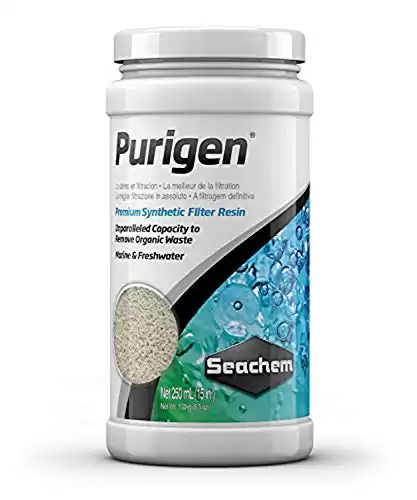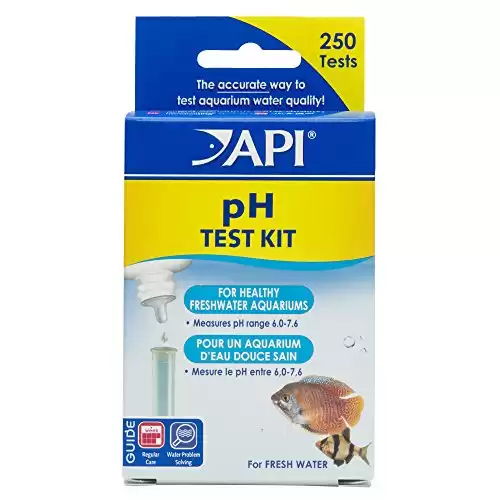Tannins in an aquarium can darken the water, as well as make conditions more acidic. But what levels of tannin are good for your fish? And how can you remove them if you need to?
Luckily, removing tannins from water is relatively straightforward and there are two easy methods, although in some cases you may not want to remove them at all. Let’s find out more.
What Are Tannins?
Tannins are naturally occurring water-soluble bio-molecules that are famous for their astringent flavor and brown-dying effect that they have on water, foods, and even skin.
You may be more familiar with tannins than you realize – they exist in tea, coffee, beer, and chocolate. They’re also used in the treatment of leather – if you’ve ever heard of ‘tanning’ animal skins, now you’ll understand why!
In the fish tank, tannins are normally leached into the water by driftwood, peat substrates, and filter mediums or dead leaves. They turn the water yellow or golden-brown, and also make the water environment more acidic.
Are Tannins Good or Bad in Aquariums?
Tannins, by themselves, are not directly harmful to your fish, although they can change the water chemistry which may or may not benefit your aquarium’s inhabitants. Whether or not you’ll welcome tannins in your aquarium will depend on your water, your species of fish and invertebrates, and your aesthetic preferences.
Reasons You Might Want Tannins In Your Aquarium
If you want to lower your water’s pH for fish that prefer acidic water, then introducing driftwood or dead leaves is one way to do this.
Fish that prefer acidic water include most species of tetra, South American cichlids like angelfish and ram cichlids, as well as rasboras, danios, and gouramis.
In the same way, if you like the look of aquarium water that’s a natural golden brown, you may want to add tannins to your tank to produce this effect. Dark water can be a legitimate aesthetic choice.
Some people also believe that tannins are beneficial for fish health, and add Indian almond leaves (terminalia catappa) as a remedy for bacterial and fungal infections.
Other aquarists like to add peat granules to their aquarium filter to gradually release tannins into the water and thus lower their tank’s pH.
- Chemical filter media that naturally softens aquarium water
- Recommended for fish that prefer soft, acidic water such as Amazonian cichlids, discus, and angelfish
But other times, tannins might seem like the last thing you’d want in your water…
Reasons You Might Not Want Tannins In Your Aquarium
Reasons for avoiding tannins or wanting to remove them from your water are just the opposite of the reasons for welcoming tannins!
If you already have acidic water or fish that prefer a high pH, then removing tannins will help to raise the tank’s pH to become more suitable for your fish.
Fish that prefer alkaline water are livebearers, freshwater pufferfish, and African cichlids like mbunas, haps, and peacock cichlids. Mollusks such as nerite snails and mystery snails also prefer more alkaline water to protect their fragile shells. If water pH dips below 6.5, decalcification can cause snail shells to become more brittle, and their young to have a lower rate of survival.
If you don’t enjoy the wild-looking amber water effect, then you may also wish to remove tannins from a purely aesthetic perspective.
How To Avoid Introducing Tannins Into Your Aquarium
The easiest way to have an aquarium free from tannins is not to introduce them in the first place!
If you want your water to be crystal clear with a high pH then you should think twice before adding pieces of wood, peat, or Indian almond leaves into your tank.
If you love the look of pieces of wood in the aquarium but don’t want the tannins, then it’s important to properly prepare your piece of driftwood from a low-tannin species of tree.
Trees that have a higher tannin content tend to be darker in color and include oak, walnut, cherry, and mahogany, while lighter-colored woods like maple, birch, and aspen have a fairly low tannin content.
Although softwoods like pine and fir are generally very low in tannins, they are not usually recommended for use in an aquarium since they could leach other substances that could be detrimental to your fish.
Whichever wood you choose, it’s important to prepare it properly to remove some of the micro-organisms and biochemicals such as tannins that could affect the biology and chemistry of your tank’s water.
How To Remove Tannins From Wood
To remove most of the tannins from a piece of wood, the normal procedure is to boil it. Place your wood in a pot of boiling water and cook it over high heat for 1-2 hours. Top up the water as it evaporates. As the wood boils, you’ll see the water going dark brown as the tannins are released. Repeating the process will help to reduce tannins further.
If the piece of wood is too large to boil, you could also keep it in a large container such as a trash can with lots of dissolved bicarbonate of soda or baking soda. The strongly alkaline soda will draw the acidic tannin out of the wood and turn the water dark brown.
Repeat this process until you have clearer water, and then do a final rinse with pure water to remove any remaining soda from the wood.
How To Remove Tannins From Aquarium Water

If you already have high tannin levels in your aquarium’s water, there are two common methods: carbon filtration and treating the water with a purifying solution.
Method 1: Install a Carbon Filter
Carbon filtration is an optional stage of filtration that consists of a carbon medium – usually activated charcoal or bituminous coal.
The microscopic sponge-like structure of a carbon filter is excellent at absorbing and filtering out phenols such as tannins that cause a tea-like color in the water. Phenols are also what cause bad smells in the aquarium, so many aquarists also use carbon filtration to remove unpleasant odors.
Carbon filter media like granular activated carbon need replacing every two weeks to two months depending on the quality of the carbon and how clean the tank is. If you are attempting to filter out a lot of tannins from the water then you’ll be needing to replace the carbon more often.
Carbon filtration is also good at removing toxins, detergents, tar and nicotine, chlorine, and medications from the water.
Carbon’s ability to filter out medication means that it needs to be removed if you’re treating your fish for a disease or infection, but can be reinstated as soon as the medication is no longer needed to clean up the water quality.
Method 2: Add a Water Purifying Product
Water purifying products such as Seachem Purigen Granules remove the brown color that tannins give the water by absorbing the tannins into their resinous, highly porous structure.
- FILTRATION: Purigen ranges in color from almost white (cream) to light yellow. Seachem Purigen is not a mixture of ion exchangers or adsorbents, but a unique macro-porous synthetic polymer that removes soluble and insoluble impurities from water.
Like carbon, they’re placed inside the filter to absorb the dark color given off by the tannins. But unlike carbon filtration, these granules don’t remove the acidifying properties of the tannins.
This is a great option, then, for aquarium owners who wish to achieve maximum water clarity while maintaining a low pH. It also has the advantage that it doesn’t remove medications from the water as carbon filters do.
Products such as Seachem Purigen need to be renewed or refreshed every 30 days or so to remain effective.
Additional Step: Check Your Tank’s pH
As well as observing the difference in your water’s coloration, it’s important to continue to monitor your aquarium’s pH to make sure that it stays within safe limits for your fish. Continual releasing of tannins could make your water pH become ever-lower, even if a purification agent disguises the dying effect.
A trusted pH test kit such as API’s 4 Piece pH Test Kit is good to have ready to check your water’s pH on a monthly basis or whenever it’s needed.
- Helps monitor and adjust pH and prevent invisible water problems that can be harmful to fish
- Accurately reads pH 6.0 - 7.6 and helps avoid fish loss
The Pros and Cons of The Two Methods of Removing Tannins
Carbon filtration is the most common way for fishkeepers to remove tannins from the water. Carbon is cheap and effective at removing not only tannins from the water but also other agents that may cloud the water or make it smell bad.
Carbon filters will also completely remove tannins from the colored water as opposed to just neutralizing their color. This means you’ll lose the acidifying and potential medicinal effects of tannins in your aquarium. Whether or not you’ll want to retain these properties depends on what water pH you’re trying to maintain and whether you’re interested in the possible medicinal effects of tannins.
Water purifying products are great if you want to simply remove the color of the tannins without losing their acidifying properties.
Amazonian-style tanks with tetras and angelfish will likely benefit from the added tannins in the water that decorative pieces of driftwood provide. Some aquarists will love the golden water created by the tannins in such a setup, but if you prefer to keep things crystal clear, then a purifying agent such as Seachem Purigen could be your best option.
How Long Does It Take To Remove Tannins From An Aquarium?
Whether you’re using a carbon filter or water purification product, you can expect to see a marked difference in the color of your aquarium water within two days.
When the clarifying effect wears off and you notice the water beginning to become brown again, it’s time to replace or refresh either your carbon granules or the product granules. This may be anywhere between two weeks to two months.
Conclusion
Tannins are loved by some fish keepers and loathed by others. If you don’t want the golden-brown coloration that pieces of driftwood and dead leaves create, then there are two easy methods for removing tannins from your water.
Whether you choose carbon filtration or a water purification product will depend on your personal preferences and the pH level that you need to maintain for your fish.





